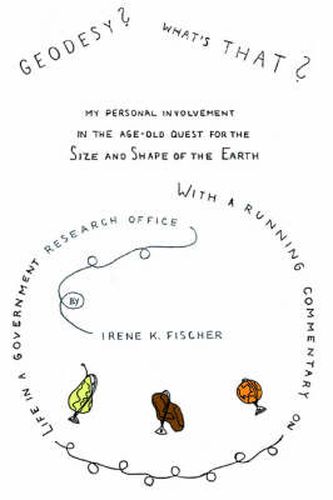Readings Newsletter
Become a Readings Member to make your shopping experience even easier.
Sign in or sign up for free!
You’re not far away from qualifying for FREE standard shipping within Australia
You’ve qualified for FREE standard shipping within Australia
The cart is loading…






This title is printed to order. This book may have been self-published. If so, we cannot guarantee the quality of the content. In the main most books will have gone through the editing process however some may not. We therefore suggest that you be aware of this before ordering this book. If in doubt check either the author or publisher’s details as we are unable to accept any returns unless they are faulty. Please contact us if you have any questions.
Geodesy (the measurement of the size and shape of the earth), fascinating since the time of Erathosenes, became a basic science for the space program. Irene Fischer was a leader in the construction of the World Geodetic System (has an Earth reference ellipsoid named in her honor) when it was still being done by surveyors, piecing together terrestrial, gravitational and astronomical data. By the 1970s, satellite geodesy and marine geodesy were just coming into their own. Using her career, Fischer revels in explaining how the science unfolded, and how misunderstandings occur across scientific fields, e.g., why the “standard ocean” and the geoid do not easily translate across the fields of oceanography and geodesy. Her account should appeal to those writing the history of women in science. Government science, too, is less well studied than academic science even though some fields, such as geodesy, were always government led. Fischer provides food for thought, as well, to those who claim to study the management of science in bureaucratic settings different from those of industry or academia. Peppered among these themes are Fischer’s solutions to historical mysteries such as why Columbus’ used a figure for the size of the earth’s circumferance that was so much smaller than Erastothenes’ or Posidonius’ (with the added benefit of making it easier to persuade his patrons).
$9.00 standard shipping within Australia
FREE standard shipping within Australia for orders over $100.00
Express & International shipping calculated at checkout
This title is printed to order. This book may have been self-published. If so, we cannot guarantee the quality of the content. In the main most books will have gone through the editing process however some may not. We therefore suggest that you be aware of this before ordering this book. If in doubt check either the author or publisher’s details as we are unable to accept any returns unless they are faulty. Please contact us if you have any questions.
Geodesy (the measurement of the size and shape of the earth), fascinating since the time of Erathosenes, became a basic science for the space program. Irene Fischer was a leader in the construction of the World Geodetic System (has an Earth reference ellipsoid named in her honor) when it was still being done by surveyors, piecing together terrestrial, gravitational and astronomical data. By the 1970s, satellite geodesy and marine geodesy were just coming into their own. Using her career, Fischer revels in explaining how the science unfolded, and how misunderstandings occur across scientific fields, e.g., why the “standard ocean” and the geoid do not easily translate across the fields of oceanography and geodesy. Her account should appeal to those writing the history of women in science. Government science, too, is less well studied than academic science even though some fields, such as geodesy, were always government led. Fischer provides food for thought, as well, to those who claim to study the management of science in bureaucratic settings different from those of industry or academia. Peppered among these themes are Fischer’s solutions to historical mysteries such as why Columbus’ used a figure for the size of the earth’s circumferance that was so much smaller than Erastothenes’ or Posidonius’ (with the added benefit of making it easier to persuade his patrons).